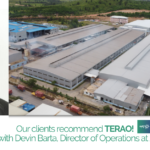Once the carbon footprint has been assessed through the dedicated methodology, cf. our article on Carbon footprint methodology it is possible to work on different solutions to reduce the emissions. In the building sector, there are many initiatives to control and minimize carbon emissions into the atmosphere.
Optimization of built areas:
Since one built square meter is equivalent to one tonne of CO2 over the entire life cycle of the building, it is really important to consider and evaluate the surface needed to meet the environmental challenges.
The strategies could be organized around different ideas:
- The adaptability for future needs cf. our article on functional adaptability, to minimize the construction surface while considering the evolution of the building during its life cycle.
- Reduction of parking areas when the construction is near the urban center served by efficient public transport
- Encourage sharing spaces (Shopping Mall, Offices and hotel) instead of new construction
Strategic location:
It is more and more important to consider the distances from the new building to urban services and workplaces to control and minimize carbon emissions linked to transport. Especially for industrial sites, the future location could be chosen for its proximity to renewable energy farms or close to a huge plot to produce on-site renewable energies.
Impactful choice between new construction and refurbishment:
From a “Carbon footprint” point of view, reuse of existing buildings allows for saving around 300kgeq CO2/m2, which leads to a reduction of the footprint during the life cycle of the project. It shows the importance of studying case by case, as part of a life cycle analysis, the respective impacts of a renovation and a construction.
Utilization of renewable energies:
The amount of greenhouse gases emitted for each kWh of useful energy varies greatly from one energy source to another. It is expressed by the emission factor, the usual unit is the kg of CO2 equivalent per kWh. Nowadays, it is possible to choose between many hybrid systems combining renewable and non-renewable energies, or 100% renewable energies. Existing solutions could lead to interesting strategies to minimize carbon intensity.
Energy efficiency solutions:
The energy consumption of a building has a direct link to the carbon emissions of a building, cf. our article on Building energy efficiency
The main issue is to implement energy efficiency solutions through technical studies to reduce future carbon emissions.
Building management optimization:
There are many diverse actions to reduce carbon emissions:
- Control the energy consumption through a better management system
- Enroll building occupants with identified objectives
- Implement a travel plan to reduce transport-related emissions
Efficient management requires the installation of tools for monitoring consumption or even tomorrow’s emissions and requires maintenance and operation adapted to the complexity of each installation.
Carbon Footprint and TERAO
TERAO is pushing the way to control and reduce the carbon emissions of assets through technical solutions. If you want to better understand your environmental impact and implement impactful solutions to reduce it, feel free to contact us at nieong@teraochina.cn for further information. We would be pleased to assist you.


![[Expertise] How to conduct an energy audit to identify areas of energy waste in business](https://teraoasia.com/wp-content/uploads/2024/06/Expertise-1-150x150.jpg)

Leave A Comment